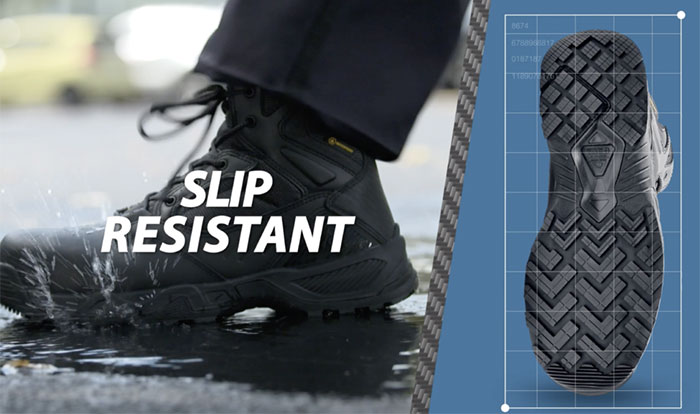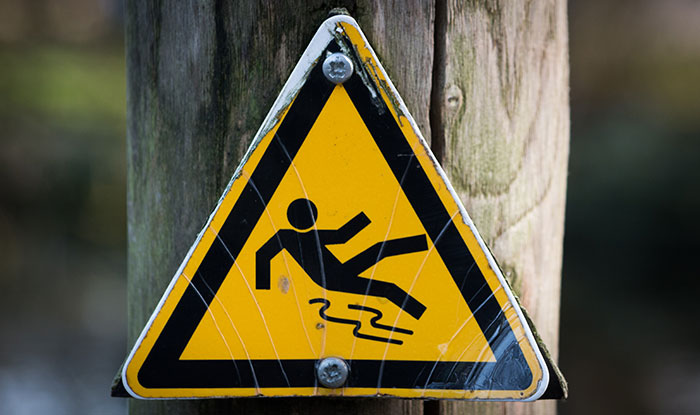The Costly Reality of Slip-and-fall Injuries in the Workplace
Slip-and-fall injuries are dangerous and costly. Medical bills and worker's compensation costs add up quickly – and if any negligence is found on the part of the employer, lawsuits may follow as well. Take for example a recent case of a slip-and-fall accident that occurred at a large chain home improvement store. A 41-year-old woman slipped in a puddle of water, hit her head on concrete and subsequently lost her sense of taste and smell. A jury awarded the woman $14.5 million for pain and suffering and another $1.9 million to cover her medical costs, according to Legal-Bay. This case is by no means typical, but it does illustrate the fact that falling injuries are extremely dangerous and that such incidents are costly to organizations. Had this accident happened to a smaller retailer, it might have driven it out of business.
The Stats on Slip-and-fall Injuries
On the job, slip-and-fall injuries are among the most debilitating injuries, often leading to days away from work, medical expenses and worker's compensation. According to the National Safety Council, these injuries cost around $10.7 billion a year in worker's compensation alone, with an average medical bill of $43,000 spent on each individual slip-and-fall accident. Those numbers alone should be enough for most employers to take the issue seriously. But it is when you look at the real effects of such injuries that the seriousness becomes truly apparent. Days away from work don't just mean lost profit or production, they mean the employee is badly injured, the effects of which could last a lifetime.
The Severity of Head Trauma
In recent months, the discussion of head trauma has focused on the sports world. It's an important topic, but affects a relatively small portion of the American population. On the other side of the coin, head trauma in the workplace can affect a large swath of the population and can have serious consequences that impact the livelihoods of each effected household. Concussions, for example, can have dire consequences, including death. As such, jobs with an inherent danger of head trauma should provide training for their employees to recognize the signs of a concussion, which include vomiting, confusion, dizziness and headaches. According to the University of Rochester long-term effects can include psychological problems, trouble sleeping, chronic headaches and memory loss.
A study found in the U.S. National Library of Medicine found that around 20 percent of those who experienced head trauma at work still had symptoms three months after the accident. Such results will affect their ability to perform their work and could even disrupt their quality of life. Perhaps more troubling was that 60 percent of those injured still had symptoms upon returning to work, which could increase the likelihood of experiencing another accident or causing someone else to have an accident.
Preventing Slip-and-Fall Accidents in the Workplace
No workplace will ever be 100 percent safe – but that doesn't mean employers shouldn't be doing all they can to implement strong safety guidelines, provide proper training and equip their staff with the right gear. For instance, wearing the correct footwear for the job can increase the likelihood of reducing slips, trips and falls in the workplace. Safety shoes with slip-resistant soles can help prevent accidents on slippery floors. Those who work in the foodservice, health care, automotive or industrial fields should certainly consider wearing safety shoes. These, along with a solid preventative safety training course could protect workers in avoiding slips, trips and falls in the workplace that result in the trauma of a head injury.
Slip, trips, and fall injuries in the workplace are nothing to be trifled with. They are a danger that should be taken as seriously as any other, especially in those industries with potential trip and fall hazards in the workplace. When one momentary accident can disrupt a person's life, everything should be done to prevent it from happening.
Employees and Your Bottom line.
Don't Forget To Share This Post!

The Key to Slip-Resistant Safety Shoes
Not all slip-resistant shoes for workers are equal. Find out how genuine slip-resistant footwear carries a high Coefficient of Friction (COF) score.

Workplace Safety 101: Preventing Slips, Trips and Falls
Preventing slips, trips, and falls is Workplace Safety 101 and of the utmost importance. SFC Safety explains how everyone can ensure a safe work environment.

How to Create an Accident Incident Rate Benchmark
How does your company stack up to the national injury incident rate averages? Learn how to calculate accident ratios to benchmark new safety guidelines.